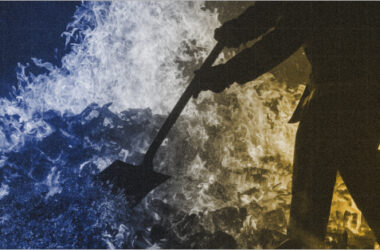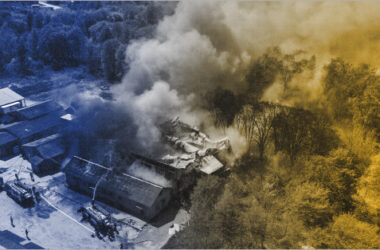When a fire breaks out, it can cause significant damage to a property and its contents. In such cases, filing a Fire Insurance claim becomes essential to cover the losses. However, the process of filing a claim can be daunting at times, especially when one is not aware of the documents required for the same.
It is important to note that the documents required to file a Fire Insurance claim may vary from one insurance provider to another. By being well-informed about the necessary documents, one can ensure a smoother and faster claim settlement process.
List of Necessary Documents While Filing a Claim in Fire Insurance
Here is a list of documents that may be required:
- Proof of Loss Form: This document is a formal statement that outlines the details of the loss, including the date, time, and cause of the fire, as well as the estimated cost of damages.
- Fire Department Report: A report from the fire department is a crucial document that provides evidence of the fire and its cause. It also includes details about the extent of damage caused by the fire.
- Police Report: If the fire was caused by arson or any other criminal activity, a police report is necessary to provide evidence of the crime.
- Insurance Policy: The insurance policy is a legal document that outlines the terms and conditions of the insurance coverage. It is necessary to provide a copy of the policy when filing a claim.
- Proof of Ownership: Proof of ownership documents such as receipts, invoices, and photographs of the damaged property are necessary to prove ownership and the value of the items.
- Proof of Value: Documents such as appraisals, estimates, and receipts can provide evidence of the value of the damaged items.
- Financial Records: If the claim involves loss of income or business interruption, financial records such as tax returns, profit and loss statements, and bank statements may be necessary.
- Repair Estimates: Estimates from contractors or repair companies can help determine the cost of repairs and may be required by the insurance company.
It is important to provide all necessary documents as soon as possible to ensure a timely and successful claim process. Failure to provide the required documents may result in delays or denial of the claim.
Importance of Accurate Documentation While Filing a Claim in Fire Insurance
Several documents are required to be submitted by a policyholder while filing a Fire Insurance claim. These documents help insurance companies assess the damage and determine the amount of compensation that should be paid out. Accurate documentation is crucial when filing a Fire Insurance claim. It can make the difference between a successful claim and a denied one.
This is because insurance companies require specific documents to validate a claim and determine the amount of compensation to be paid. Any mistakes or omissions can result in delays or denial of the claim. For example, if the proof of ownership is not clear or if the value of the damaged items is not accurately estimated, the insurance company may not approve the claim or may offer a lower compensation amount.
To avoid such issues, it is important to keep all these documents in a safe place. In addition to these documents, it is also important to take photographs and videos of the damage caused by the fire. These can be used as evidence when filing a claim. It is also important to update these documents regularly to reflect any changes in ownership or value.
Procedure to File a Fire Insurance Claim
Filing an insurance claim for fire damage can be a complicated process, but it is essential to ensure that you receive the compensation you are entitled to. The following points will help you understand the procedure to file a Fire Insurance claim:
- Contact the Insurance Company: The first step is to contact the insurance company as soon as possible after the fire. Make sure to provide them with all the necessary information, including the policy number, date and time of the incident, and a description of the damage.
- Document the Damage: Before starting the cleanup process, document the damage by taking photographs and videos of the affected areas. This evidence will help support your claim.
- Secure the Property: If necessary, take steps to secure the property to prevent further damage, such as boarding up broken windows and doors.
- Get an Estimate: Contact an experienced contractor or restoration company to provide an estimate of the cost to repair or replace the damaged property. This estimate will be used to determine the amount of compensation you are entitled to.
- Submit the Claim: Once you have gathered all the necessary information and documentation, submit the claim to the insurance company. Make sure to include all the necessary documents, such as the estimate, photographs, and videos.
- Wait for the Insurance Company’s Response: After submitting the claim, the insurance company will review the information and documentation provided. They may request additional information or documentation before making a decision.
- Receive Compensation: If the claim is approved, the insurance company will provide compensation for the damages. The amount of compensation will depend on the policy’s terms and conditions, the extent of the damage, and the cost of repairs or replacement.
Tips for a Successful Claim
Filing a Fire Insurance claim can be a stressful and overwhelming experience. However, by following a few tips, you can increase your chances of a successful claim and ensure that you receive the compensation you deserve.
- Act Quickly
The first and most important tip for a successful Fire Insurance claim is to act quickly. As soon as the fire is extinguished and it is safe to do so, contact your insurance company to report the incident. The sooner you file your claim, the sooner your insurance company can begin the process of assessing the damage and determining the amount of compensation you are entitled to.
2. Document the Damage
Before you begin cleaning up or making any repairs, it is important to document the damage in as much detail as possible. Take photographs and videos of the affected areas, and make a list of all damaged or destroyed items. This documentation will be crucial when filing your claim and can help to ensure that you receive the full amount of compensation you are entitled to.
3. Keep Detailed Records
Throughout the claims process, it is important to keep detailed records of all interactions with your insurance company, including phone calls, emails, and letters. Keep a record of the date, time, and content of each communication, as well as the name and contact information of the person you spoke with. This information can be invaluable if there are any disputes or issues that arise during the claims process.
4. Provide Complete Documentation
When filing your Fire Insurance claim, it is important to provide complete documentation, including all required forms and supporting documents. This may include a police report, a fire department report, receipts for damaged or destroyed items, and any other relevant documentation. Providing complete and accurate documentation can help expedite the claims process and increase your chances of a successful claim.
5. Work with Your Insurance Company
Finally, it is important to work closely with your insurance company throughout the claims process. Be responsive to any requests for information or documentation, and provide any additional information or documentation as requested. By working collaboratively with your insurance company, you can help to ensure a smooth and successful claims process.
Common Mistakes to Avoid While Filing a Fire Insurance Claim
When filing a Fire Insurance claim, there are several common mistakes that policyholders should avoid. These mistakes can lead to delays in processing the claim or even result in a denial of the claim. Here are some of the most common mistakes to avoid:
- Failing to Report the Fire Promptly
One of the most common mistakes that policyholders make is failing to report the fire promptly. It is important to report the fire to the insurance company as soon as possible so that they can begin the claims process. Delaying the reporting of the fire can lead to delays in processing the claim, and in some cases, the claim may be denied altogether.
2. Not Providing Adequate Documentation
Another common mistake is not providing adequate documentation to support the claim. Policyholders should gather all relevant documents, such as the insurance policy, fire department report, and any receipts or invoices for damaged items. Failing to provide this documentation can result in delays in processing the claim or a denial of the claim.
3. Providing Inaccurate Information
When filing a Fire Insurance claim, it is important to provide accurate information. This includes providing a detailed description of the damage, the cause of the fire, and any injuries or fatalities that occurred as a result of the fire. Providing incomplete or inaccurate information can lead to delays in processing the claim or a denial of the claim.
4. Failing to Mitigate Further Damage
Policyholders have a duty to mitigate further damage to their property after a fire. This means taking reasonable steps to prevent additional damage from occurring, such as covering damaged areas with tarps or boarding up broken windows. Failing to take these steps can result in a reduction in the amount of the claim or a denial of the claim altogether.
Conclusion
In conclusion, filing a Fire Insurance claim can be a daunting task for policyholders. However, providing the necessary documents and information can help ensure a smoother process and a successful claim. The required documents may vary depending on the insurer and the policy but generally include proof of loss, evidence of ownership, and proof of insurance coverage.
Overall, filing a Fire Insurance claim requires attention to detail and compliance with the policy terms and conditions. By following the necessary steps and providing the required documents, policyholders can increase their chances of a successful claim settlement.
Frequently Asked Questions
- What are the two most important documents required for a Fire Insurance claim?
The two most important documents required for a Fire Insurance claim are the policy document and the proof of loss. The policy document outlines the terms and conditions of your insurance coverage, while the proof of loss is a document that lists the items that were damaged or lost in the fire.
2. What are the common problems faced when filing a Fire Insurance claim?
Some of the common problems faced when filing a Fire Insurance claim include delays in processing the claim, disputes over the cause of the fire, and disagreements over the value of the damage caused by the fire.
3. What is the process for calculating a Fire Insurance claim?
The process for calculating a Fire Insurance claim involves assessing the damage caused by the fire and determining the cost of repairs or replacement. The insurance adjuster will consider factors such as the age and condition of the damaged items, the cost of labor and materials, and any applicable deductibles or limits on coverage.








